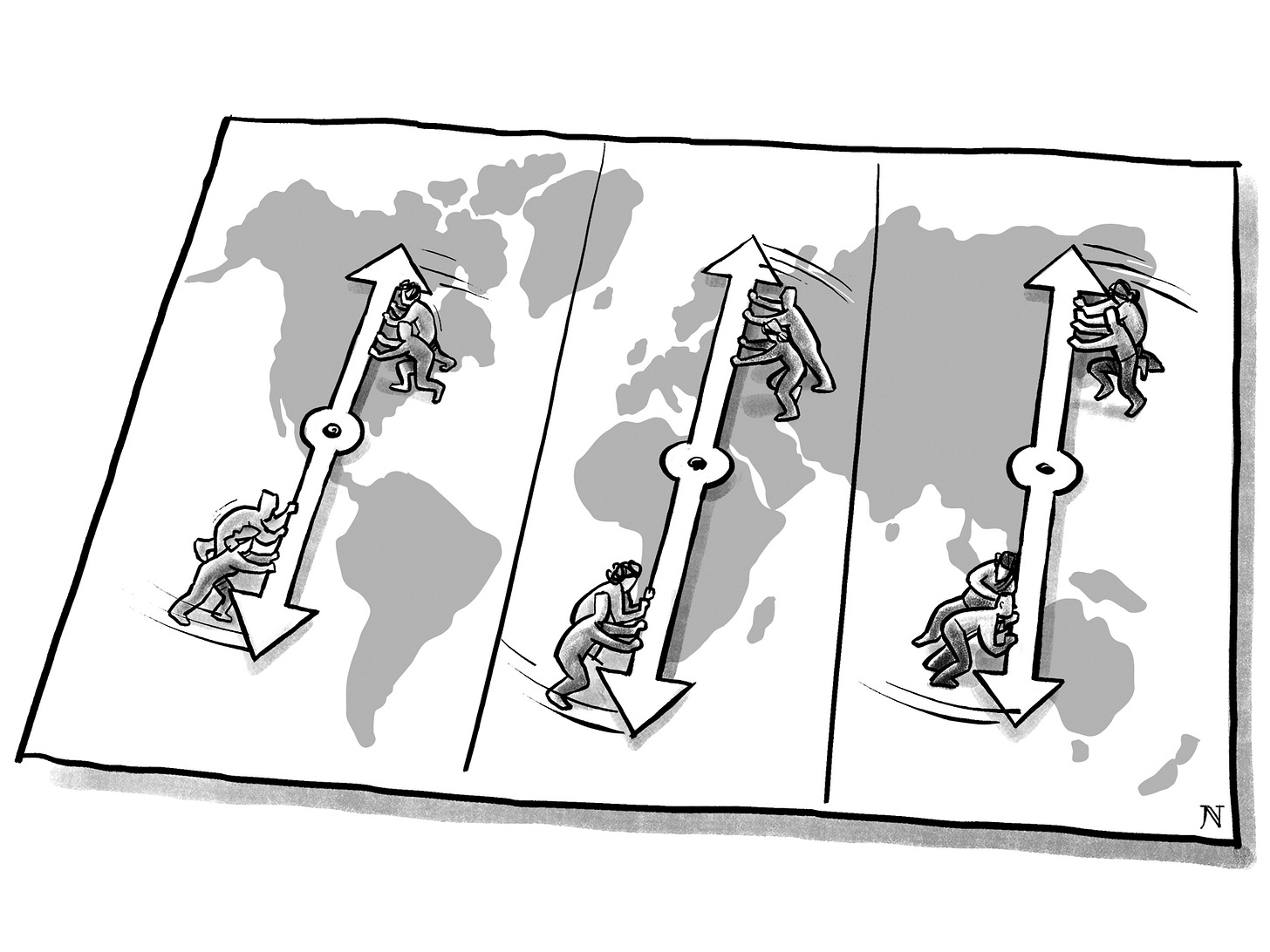Tie another string of red yarn around this thumbtack
The climate studies predicting unlivability keep piling up

This study comes out of Oregon State U. and it contains all the usual warnings:
The Earth is barreling toward “uncharted climate territory” and on track to become uninhabitable for three and six billion people by the end of the century, a new report found.
I have tended in all my analysis toward the lower end of that estimate: There will be about 5B people living within 30 degrees north and south of the equator — my definition of Middle Earth. Say the majority face conditions of unlivability (3B), with most of the initially displaced being farmers. They head into the cities that are similarly overburdened by heat and lack of economic opportunity. Maybe a third stay there. Maybe another third move a country or two over. That would still leave potentially 1B souls heading poleward.
You can try to keep them all packed into that unlivable band, but that is likely to lead to state failure triggering even more of a flow.
The State of the Climate report, by climate scientists from around the world summarized reams of evidence indicating that global efforts to curb greenhouse gas emissions are falling way short. The group, led by a professor and former researcher from Oregon State University, said only profound measures to protect people and the environment will give humanity “our best shot at surviving these challenges in the long run.”
What we’re seeing here is the big shift from mitigation focus to adaptation focus. Estimates are that we’re currently spending about 90 percent of our investment on reducing CO2 emissions and only about 10 percent on adaptation. When insurance companies start leaving California and Florida in droves, I would say that balance needs to be recalibrated.
Like most of these studies, we’re talking about meta-analysis, or the analysis of many other studies:
The report summarized 45 studies and analyses to look at the state of Earth’s “vital signs,” such as global temperatures, forest cover and sea ice, amid the dovetailing climate and biodiversity crises. The authors found a planet in crisis that is dangerously close to several “tipping points” that could upend whole societies.
Possibilities of “worldwide societal breakdown are feasible and dangerously underexplored,” the scientists wrote.
Such scenarios are dangerously unexplored. That is why I wrote America’s New Map, the first genuine geo-political primer on how America and the world need to address it with nothing less than a profound shift from East-West thinking to North-South thinking.
I know I face an uphill battle in proposing a new American grand strategy that focuses on climate change and a North-South future. It flies against current events (Ukraine, Israel-Hamas, Taiwan scenario, Iran’s evil mischief) and it flies against the long-inculcated mindset of our ruling generations (Boomer, X).
But I love playing the John the Baptist. He was always my favorite Biblical character.
And so I wind another red yarn string about this thumbtack before heading out to that desert of indifference.
I am a patient man. I started working climate change in the year 2000, coming off of Y2K. If you want to propagate a grand strategy, then your favorite emotion must be anticipation and your favorite singer should be Carly Simon.






Meanwhile, it’s snowing in Oslo, Norway on the 30th of October 2023.